Divided into the Northern Song (960-1127) and Southern Song (1127-1279). During the Song dynasty, China became the most advanced country in the world — attaining a level of development that Europeans found hard to believe at the time (as described by Marco Polo who only saw late remnant of the Song glory).
Science & Tech Advances
The 11th century was especially prosperous. China underwent an industrial revolution—mass-producing quantities of raw materials like salt and iron on a scale that wouldn’t be seen in Europe until the 18th century.
During the Song, China’s “four great inventions” were widely used: The compass, gunpowder, paper-making, and printing.
Science, technology and engineering reached new heights (such as ship and bridge building, hydraulic engineering, and architecture). Learning from Arab seafarers, the Chinese were the first to build multi-masted ships and use the magnetic compass as a navigational aid on sea. But two Song developments had an even bigger impact on the world: gunpowder and printing.
GUNPOWDER was accidentally discovered earlier in the 9th century by Chinese alchemists looking for the elixir of life. But during the 10th century, it was first used for military purposes (by 1040, the recipe was printed and standard issue for Chinese artillerymen). Before long, they were using primitive bombs/grenades, exploding arrows, rockets and mines, and later, early cannons and mortars. Its introduction to Europe around 1300 would have an enormous effect (the first recorded use was by English against the French in 1346).
PRINTING, however, would be China’s single greatest contribution to world civilization. Up until this point, printing developed rather gradually. Facing a shortage of copper for coins in 1007, merchants in Chengdu issue the world’s first paper money. In 1024, the government takes over the printing of paper money in Chengdu (which soon spreads throughout China).
Another breakthrough was in 1041 when movable clay type printing was invented.
The arts flourished too. If the Tang was the golden age of Chinese poetry, Song was China’s golden age of painting. Song landscape and scroll paintings—favoring wild mountains and deep gorges that dwarf humans—are considered China’s finest.
1100: China’s population grows to about 100 million.
Enter Mongols
Starting in this period, non-Chinese states from the north would deeply impact Chinese history.
Around 1200, China saw the ferocity of new breed of steppe warriors—the Mongols. Like most northern groups, the Mongols were exceptional horsemen who trained for lives in the saddle (able to cover what seemed to European and Chinese to be incredible distances and impossible to chase). They lived on plunder and were masters of psychological warfare (their Kaiser Söze-like stories of terror quickly spread).
For the Mongols (about a million strong), conquering China was one thing. But ruling a large land mass populated with around 100 million Chinese subjects was another thing. For the next 10 centuries, history would see a staccato pattern: northern groups conquering China…but then failing to hold it (if there were any ancient management consultants, they’d say that conquering and managing are two different core competencies).
Their leader, Temujin, would later be known by his Persian name, Genghis Khan (“Universal ruler”). His ambition was to rule the world—summed up in his slogan “One sole sun in the sky, one sole sovereign on earth”. He would eventually control much of Europe and Asia– outstripping the exploits of even Alexander the Great.
He was said to have declared: “Man’s greatest joy is in victory—in conquering one’s enemies, pursing them, depriving them of their possessions, making their loved ones weep, riding on their horses, and embracing their wives and daughters.” (The Conan the Barbarian film used an abbreviated form).
1227: Genghis Khan dies and his territory divided amongst his four sons. But the Mongol campaign of pillage and conquest continues for decades. Impressively, the Song are able to keep them at bay.
1260: Kublai Khan, the grandson of Genghis, becomes the Great Khan. Separately, Venetian merchants Niccolo and Marco Polo set out of the first of two journeys to China.
1279: After learning the secrets of Chinese warfare (specifically, naval warfare and gunpowder), the Mongolian Empire finally overrun the Song and takes over all of China. Kublai Khan proclaims himself the emperor of a new dynasty, the YUAN (“origin” or “beginning”).

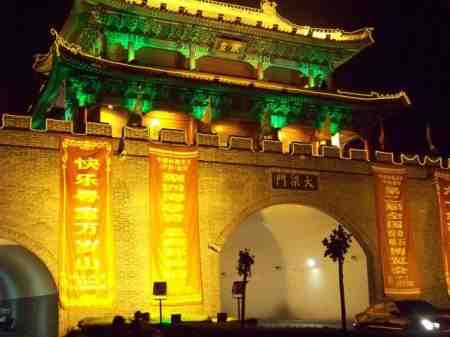
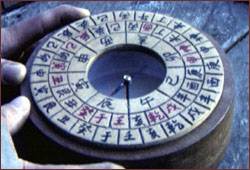
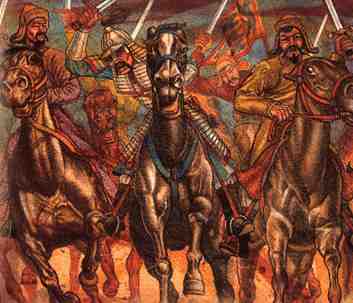


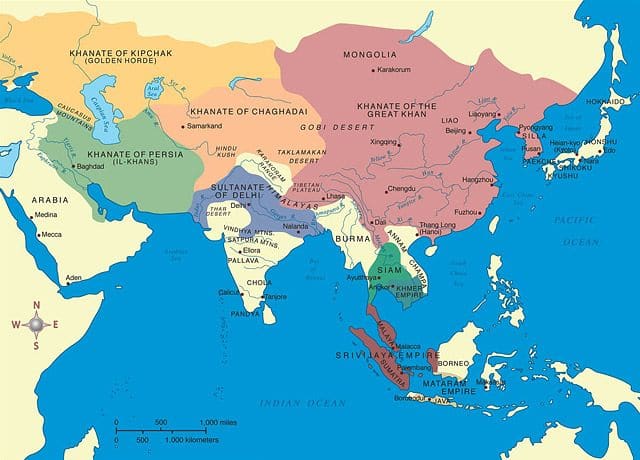
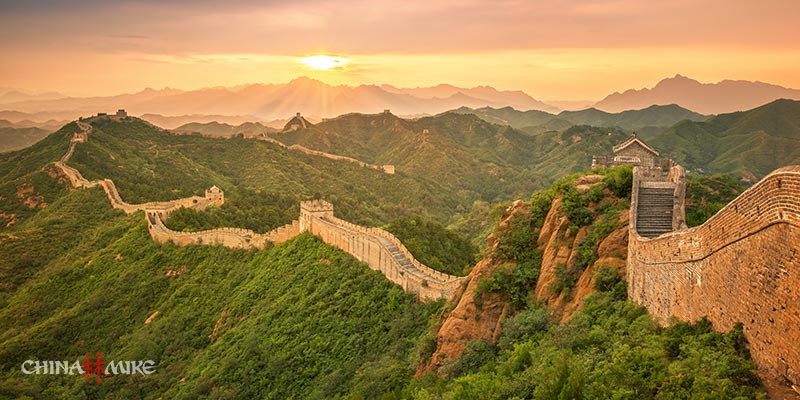
![The Ming Dynasty [1368-1644 ]](https://www.china-mike.com/wp-content/uploads/2011/01/ming-dynasty-map-small.jpg)